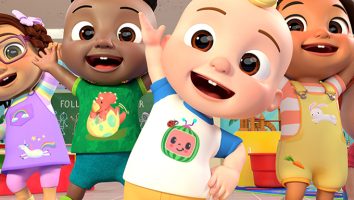LA-based footwear company Skechers is bringing its decade of kid know-how in the shoe business to show business with Skechers Entertainment.
The success of a comic book created three years ago in-house to promote the various lines of footwear Skechers manufactures for kids and teens drove the move into content creation. (At the end of 2008, Skechers’ kids business accounted for 22% of total sales, with a 50/50 split between boys and girls.) Packed inside the respective models’ shoe boxes, the comic books – featuring characters like Kewl Breeze that promoted Skechers’ Airators – and their corresponding commercial spots, helped spike sales. Moreover, the company soon realized the characters were resonating with kids. Young consumers began going into retailers and asking for the character name rather than the actual shoe model.
Since making the decision to explore the characters’ out-of-the-box entertainment potential about six months ago, Skechers has enlisted a couple of kids biz vets to head up creative development and licensing for the division. With stints at Disney, Paramount and most recently MGM under her belt, Kristen Van Cott has stepped into the role of SVP of creative development, while Eric Stein, who’s worked at DIC, Lucasfilm and headed up animation, TV and film licensing at MGM, is on-board as VP of licensing and business development.
Wasting no time, an animated 26 x half-hour series inspired by the aforementioned comic book characters is now on the development slate and set for a July 2010 delivery. Zevo-3 stars Kewl Breeze who can produce icy projectiles, Z-Strap who can morph metal into weaponry, and Elastica, whose hair can stretch into any shape she imagines. These once-regular teens were transformed into superheroes after being exposed to the Zevo compound – a potent genetic enhancer. The three newbie heroes must battle against an army of mutants, freaks and monsters led by the villain Stankfoot, all the while keeping their identities a secret from their friends and family. Moonscoop’s LA-based studio is handling animation on the series. And Stein says his team is evaluating broadcast offers from a number of territories, but at press time, could not release details.
Interestingly, Stein and Van Cott are quick to point out that Skechers Entertainment, and its first series, weren’t conceived as vehicles to sell more shoes. ‘The three characters were featured in separate commercials,’ says Van Cott. ‘We brought them together for the show and created an organic story that has nothing to do with where they came from.’ As such, the show does not feature nor mention Skechers shoes.
However, as Stein explains, Skechers is primarily a marketing company and has the ability to channel content through its marketing machine, giving the new division a point of difference from the competition.
‘We’re going to promote the show alongside our broadcast partners in many different ways,’ says Stein. ‘For example, we have access to between 25 million and 50 million boxes of kids shoes that we can use to promote the TV show.’ The entertainment division’s advertising initiatives will also be backed by the promotional muscle of parentco Skechers – as a US$1.5-billion company, it has the resources to pony up for everything from TV spots to outdoor advertising. The division is also working on a digital strategy that will include exclusive online content and games.
Stein says besides the inaugural project, Skechers Entertainment is fully financed to develop further animated series concepts and has a few already in early development. One’s a music-based, girl-skewing show, and there’s a core-kid boys series and one for girls in the works as well.





















